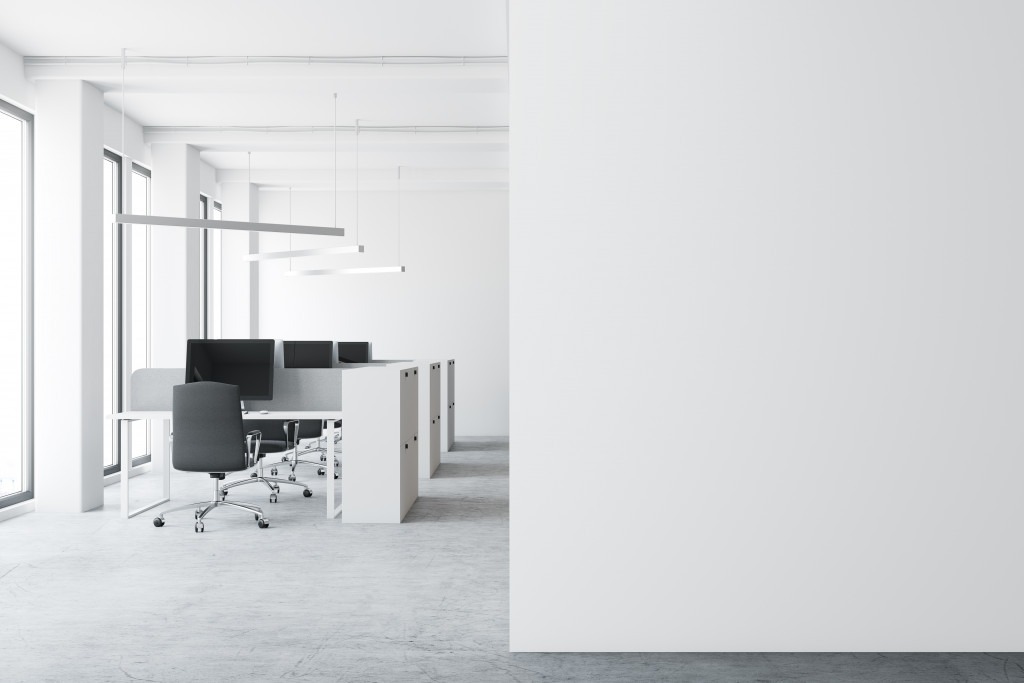- Design a workspace that encourages employee productivity and well-being, and you will be sure to reap the rewards of a productive team.
- Privacy levels and security are important for employee satisfaction.
- Consider comfort factors such as lighting and space layout.
- Efficient organization and tools improve employee well-being and productivity.
- Proper noise control is crucial for a productive work environment.
Creating a productive office environment that encourages employee productivity is essential for any organization. The right design can make employees feel comfortable, safe, and inspired, increasing morale and productivity.
It is important to consider how each element in your office affects employees’ work experience and how it may impact their ability to do their job well. By considering these elements carefully, you can create a workspace that boosts motivation and drives performance.
Privacy Levels
In today’s digital age, privacy is a pressing concern for employees. Proper consideration of privacy levels when improving the workplace helps alleviate concerns, improve productivity, and protect confidential information.
One practical solution for such privacy is using a commercial mortise lock for doors containing sensitive information. It allows only the employees who have access to the area, guaranteeing protection at all times.
Privacy levels mean giving employees the choice of secure spaces they can use for meetings or focused work and ensuring that data is encrypted or password protected. These measures can boost employee satisfaction and productivity, ensuring their well-being is considered when designing office improvements.
Comfort
Considering the comfort of your employees is important when designing an office space. Here are some elements to consider:
Lighting

When creating a workspace that promotes productivity, lighting is a critical aspect that should not be overlooked. Proper lighting can make all the difference in how your employees feel and work within the office. Studies have shown that natural lighting, in particular, can enhance mood, increase productivity, and reduce absenteeism.
Alternatively, dim lighting or spaces with few windows can lead to lethargy and eyestrain, reducing focus and productivity. Therefore, it is crucial to consider a mix of natural and artificial lighting and ensure that the lighting levels suit the tasks and individuals within the office space. By thoughtfully considering lighting in your office improvement plans, you can maximize productivity, well-being, and engagement among your team.
Organization
Improving the organization of your office is key to unlocking the full potential of your employees. Proper organization leads to a more efficient work environment, reducing time to complete tasks and minimizing frustrating obstacles.
You can positively impact employee productivity by considering organization when adding new features or upgrading the space. This can include storage solutions for equipment and supplies, clear and concise communication systems, and an accessible layout to encourage team collaboration.
Neglecting an organization can result in clutter, confusion, and lost time, hindering productivity. Therefore, prioritizing the organization in any office improvement project is crucial for your team’s success and your business’s overall efficiency.
Space Layout

Regarding improving office productivity, space layout is a crucial consideration that shouldn’t be overlooked. Simply put, space layout refers to the strategic arrangement of furniture, equipment, and other physical elements in a workspace. The way a work area is laid out can have a significant impact on employee well-being and productivity.
Poorly arranged spaces can lead to uncomfortable working conditions, distractions, and communication difficulties. By analyzing the layout of an office and making necessary adjustments, employers can create a more efficient and comfortable work environment that can ultimately boost productivity.
Tools & Technology
Improving productivity in the workplace is a major goal for any office. One way to achieve this is by considering the role of tools and technology in the workplace. By properly considering tools and technology, an office can create an environment that helps employees thrive, rather than stifling their productivity.
For example, project management software or collaborative messaging apps can streamline communication and project coordination, allowing for better employee collaboration. In addition, using ergonomic chairs, standing desks, or lighting can improve staff wellness, job satisfaction, and mental health. Considering these factors, an office can set itself up for success by creating an environment conducive to productivity and employee well-being.
Noise Control
Office noise can have a significant impact on employee productivity and well-being. Properly considering noise control when improving your office is crucial in creating a conducive and comfortable work environment for your team. This means paying close attention to noise sources within the office, such as HVAC systems, office machinery, and even conversations in open work areas.
While some noise is unavoidable, mitigating excessive noise levels can improve employee concentration, focus, and overall satisfaction. Proper noise control measures can also reduce stress and tension within the workplace. As an expert, it is important to take noise control seriously and implement a comprehensive strategy to ensure your team can thrive in a productive work environment.
These are just a few considerations that should be considered when improving an office space. Employers can encourage productivity and boost employee morale by analyzing each element and implementing effective strategies.

